Huge quake exposes problems in how New Zealand prepares
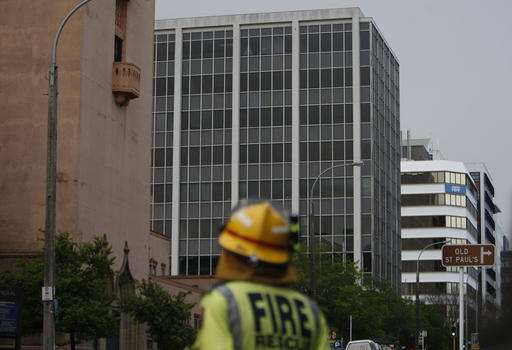
The huge earthquake that hit New Zealand this past week, buckling roads, uplifting sections of coastline and killing two people, also exposed problems in how the country monitors its earthquake risk and prepares for tsunamis. And it raised questions about whether the city of Wellington put people at risk by reopening buildings too soon.
The nation was spared the devastation of five years ago when 185 people were killed in the Christchurch earthquake. But some consider it was more by luck this time than by good planning.
Here's what happened, minute by minute, after the quake hit early Monday, with details on how officials intend to improve:
___
12:02 A.M.
A magnitude-7.8 earthquake strikes New Zealand near the coastal town of Kaikoura. It rumbles for 2½ minutes, triggering six separate faults that begin on land and continue out to sea.
The duty officer for the country's official earthquake warning site is asleep. Although earthquakes pose a huge threat to New Zealand, the GeoNet site is not monitored around the clock.
___
12:03 A.M.
GeoNet generates its first computer estimate for the quake: magnitude 6.5. It's a big miss. Quakes are measured on an exponential scale, and this one would prove to be 20 times larger and 89 times more powerful than that. For some quake-hardened New Zealanders, a magnitude 6.5 might signal it's time to get some more sleep. A magnitude 7.8 might signal it's time to run for higher ground.
___
12:05 A.M.
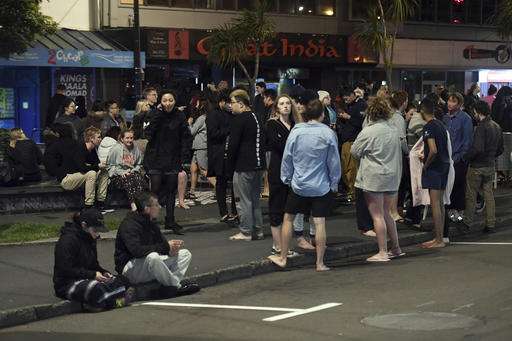
The nation's emergency call number, 111, fails after operators evacuate their building in the capital, Wellington. As ceiling tiles fall around them, operators think they've activated a backup system, but in their haste to leave have failed to do so.
___
12:09 A.M.
GeoNet's automatic estimates of the quake have risen to magnitude 7.5. The duty officer is now awake and reviews the data. She downgrades the quake to a magnitude 6.6, and upgrades the site's confidence in its estimate.
GeoNet director Ken Gledhill said that estimate was a result of a glitch in their system, in which the monitoring stations closest to the quake were relied upon too heavily. He said those stations became overloaded and did not work properly during the severe quake.
"We have to wake people and get them out of bed to look at complex data and make serious calls very quickly," he said. "It is not an ideal situation."
Gledhill wants the site monitored 24 hours a day and appears to be gaining support for that.
___
12:13 A.M.
The Pacific Tsunami Warning Center in Hawaii estimates the quake at a magnitude 7.4 and says it doesn't believe there's a tsunami threat.
Kanoa Koyanagi, a geophysicist at the center, said the quake was borderline for issuing an alert. He said the center is primarily concerned with tsunamis that might affect the broader Pacific region or might hit a country that doesn't have its own monitoring system.
"When it comes to the 'threat' or 'no threat' message, we've turned over that responsibility to those countries that already have a tsunami warning system," he said.
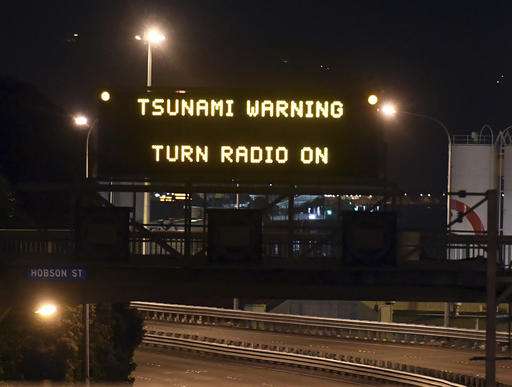
That includes New Zealand. But it turns out authorities in New Zealand were looking to the Pacific warning center for direction on whether there was a threat, according to Gledhill.
He said GeoNet workers noticed a tide gauge in Kaikoura was dropping rapidly, a sign that a tsunami might be coming. So they told civil defense authorities. Experts believe the quake was so powerful it permanently raised the entire coastline in places by up to 1 meter (3.3 feet), exposing local abalone, or paua.
___
12:21 A.M.
The U.S. Geological Survey in Golden, Colorado, issues its first estimate of the quake: magnitude 7.4. The USGS uses seismometers from around the world to monitor earthquakes around the clock. Geophysicist Jessica Turner said the Kaikoura quake was particularly complicated to assess because it triggered so many faults over such a wide area.
She said the only way to properly gauge the size of an earthquake is to wait until the waves of energy have traveled through the Earth's crust.
"With really large earthquakes, the first magnitude is always going to be a little off," she said. "But we want to get our quickest information out there, so people can have the information and brace themselves for aftershocks."
She said New Zealand's reliance on local seismometers works for smaller quakes, but will inevitably make it difficult to measure larger quakes.
___
12:37 A.M.
New Zealand's Ministry of Civil Defence and Emergency Management sends out a tweet: "There is no tsunami threat to New Zealand." It's retweeted hundreds of times.
The agency based its assessment in part on the erroneous belief that the quake had struck only on land, which doesn't usually produce a tsunami. By now, authorities were watching the Kaikoura gauge and other tide gauges with alarm.
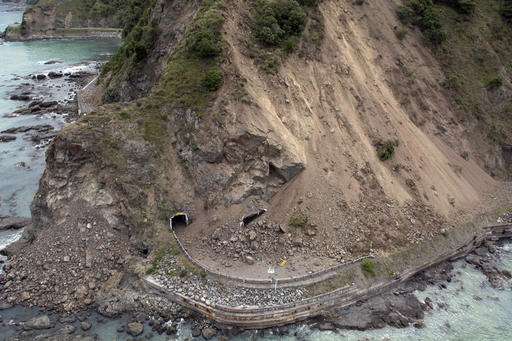
The agency's director, Sarah Stuart-Black, declined this past week to answer questions about how it made its decisions after the quake.
The Pacific warning center was also watching the tide gauges, but Koyanagi said it was already too late to warn Kaikoura.
"If you feel strong shaking, and you're near the coast, you've got to move to higher ground," he said. "Because there's not going to be a warning in time for that situation."
___
12:56 A.M.
Civil defense authorities reverse course: "situation has changed—tsunami is possible," they tweet. They advise people move away from the coast.
By now, a tsunami of about 2 meters (7 feet) has already hit the coast around Kaikoura.
Residents caught a break: It hit at low tide. Gledhill says it could have caused deaths and huge amounts of damage if it had hit at high tide. The rest of the country escapes major problems as well.
___
12:57 A.M.
Police report the emergency number is working again after crews activate a secondary backup system. Many near the quake's epicenter have no way to make calls anyway, because phone lines and cell networks are down.
___
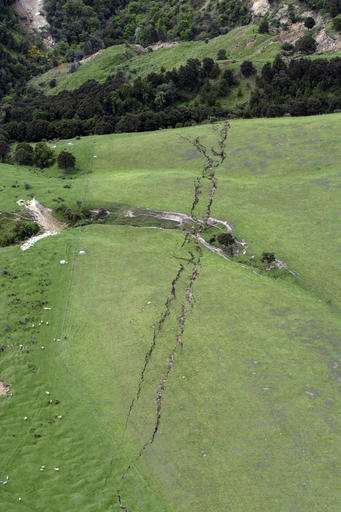
1:01 A.M.
Civil defense officials issue more tsunami warnings. Some local authorities begin sounding piercing tsunami alarms. Some places, including Wellington, have no alarms. In other places, local officials elect not to use them.
"No one is happy with it," said Gerry Brownlee, New Zealand's acting minister of civil defense. "Civil defense has already recognized that we could do better."
Brownlee said he wants to examine the structure of the organization. And officials also want to introduce a push alert system for cellphones, a system some other countries already have.
___
1:18 A.M.
The U.S. Geological Survey makes its final quake assessment: magnitude 7.8. Scientists at the USGS have used 163 stations worldwide to make their call, including 29 in New Zealand.
Turner, the geophysicist, said the rule of thumb is that people can expect aftershocks of up to one magnitude less than the initial quake. Monday's quake ended up holding to that rule: Strong aftershocks continued to rumble throughout the day, causing more damage, and the two biggest were magnitude 6.2.
But at this moment, most New Zealanders, reliant on GeoNet for their earthquake information, still believe the quake is a magnitude 6.6, potentially impacting what decisions they make.
___
1:51 a.m.
GeoNet upgrades its quake estimate to magnitude 7.5. Two days later, the agency will consult with USGS and agree that it was a 7.8.
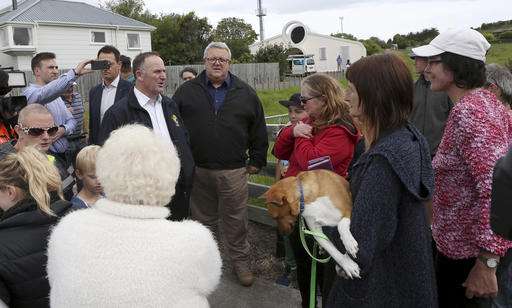
___
5:12 A.M.
The Wellington City Council asks people to stay home from work on Monday while crews assess buildings. They later say the city will reopen for business Tuesday.
___
TUESDAY-FRIDAY
Wellington authorities evacuate several downtown buildings and cordon off streets. A nine-story office building and a parking garage are found to be in danger of collapsing, and surrounding buildings are cleared as well. A girl's high school decides to close one of its buildings and send its younger students home as a precaution. The list of building closures grows to about two dozen.
Deep beneath the prime minister's office, the emergency bunker used by civil defense leaders springs a water leak. Stuart-Black, the agency director, says that the leak was caused by the quake, but that it was small and quickly repaired.
Some residents fault city officials for reopening buildings too hastily. Brownlee, the acting minister of civil defense, says the majority of Wellington buildings are performing well, and people shouldn't get too pessimistic. "In these circumstances, life does go on," he says.
© 2016 The Associated Press. All rights reserved.

















